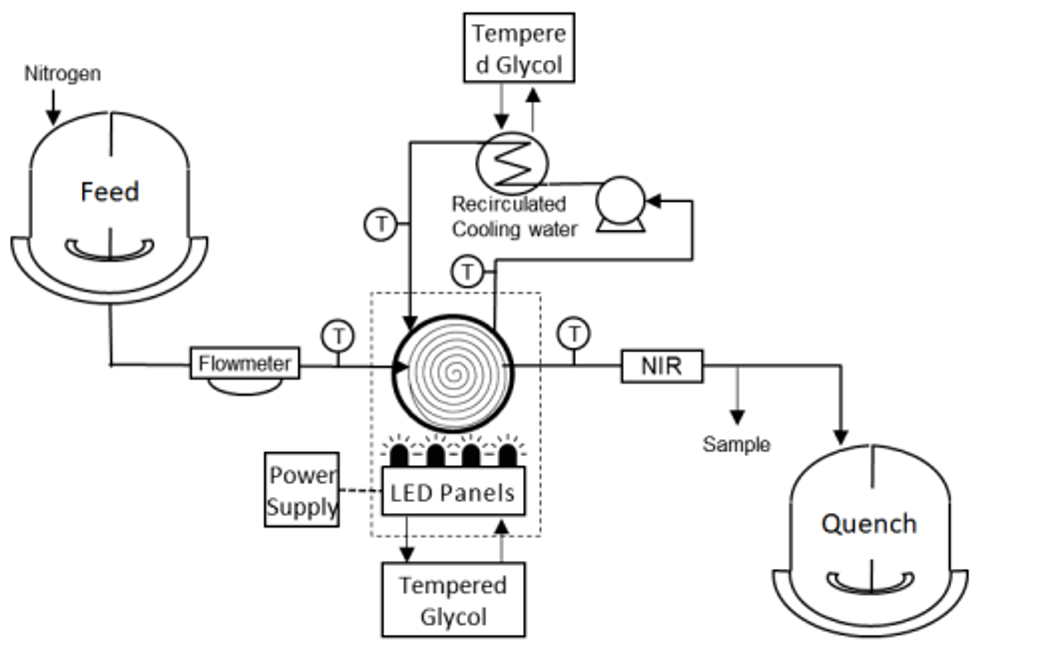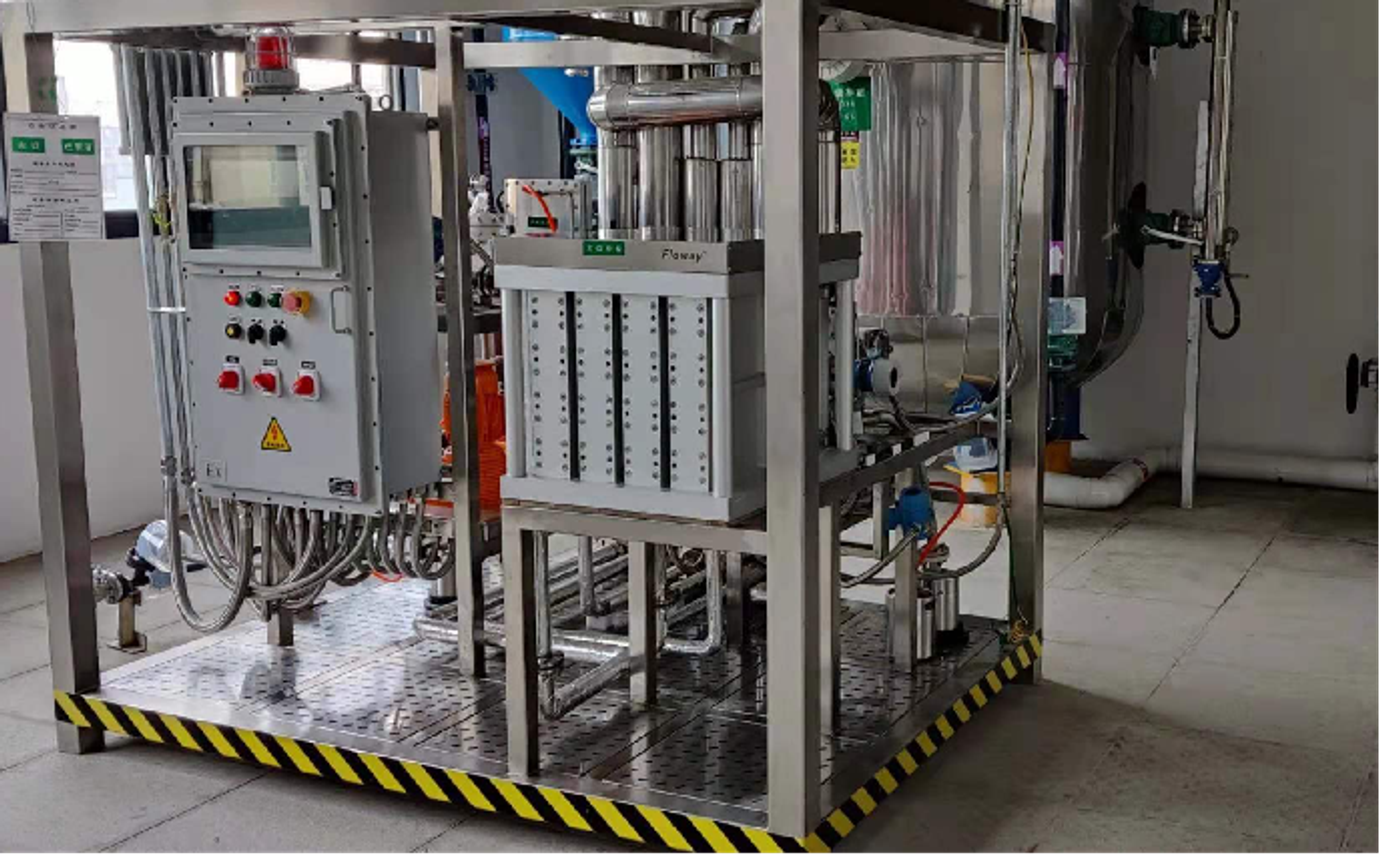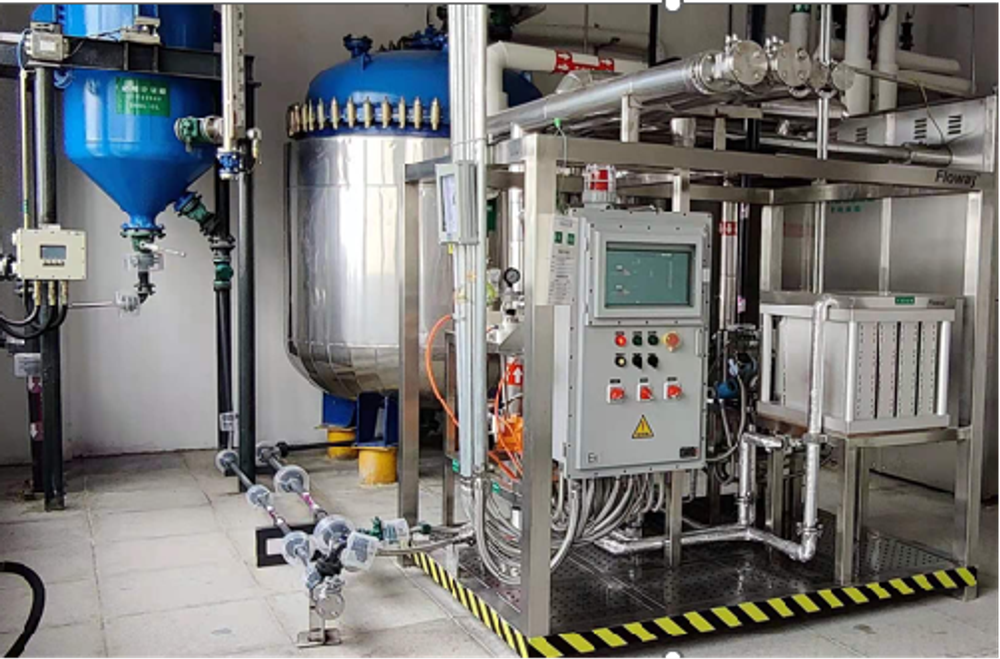Case Study on the Use of Flow Chemistry in Manufacturing Belzutifan
Introduction
In our comparison of flow chemistry versus traditional batch processing for pharmaceutical reactions, we highlighted flow chemistry's notable benefits. A prime example of these advantages can be seen in the development of a manufacturing route for belzutifan. Approved by Merck in August 2021 for the treatment of specific renal cell carcinomas, belzutifan is pioneering as the first therapy inhibiting hypoxia-inducible factor-2 alpha. Its innovation has been recognized with the "innovation passport" from the UK's MHRA, marking a milestone in cancer treatment. The researchwork, titled "Manufacturing Process Development for Belzutifan, Part 2: A Continuous Flow Visible-Light-Induced Benzylic Bromination," by Bottecchia et al., provides an insightful rationale for utilizing flow chemistry in belzutifan's synthesis, which we will explore for its advantages (for a more detailed analysis of this research paper, please click here).
The Synthesis of Belzutifan via Flow Chemistry and Photochemistry
The process begins with forming a complex spiro ring from an intermediate, leading to benzylic bromination. This step is pivotal as it transforms the starting material into a more functionalized compound crucial for belzutifan's structure. The benzylic bromide produced is then subjected to further oxidation and reduction processes, employing Noyori's Catalyst, to yield belzutifan intermediates.

Synthesis of Belzutifan API from Belzutifan intermediate CAS No. 1672665-55-2
The integration of flow chemistry with photochemistry for the benzylic bromination from CAS No. 1672665-53-0 to CAS No. 2739737-08-5 in producing belzutifan showcases a significant leap forward in pharmaceutical manufacturing. This approach not only improves safety and robustness compared to traditional methods but also allows for precise control over the reaction's conditions.

Comparison of thermal and photochemistry processes for the benzylic bromination step. src: Bottecchia, C. et al. Manufacturing Process Development for Belzutifan, Part 2: A Continuous Flow Visible-Light-Induced Benzylic Bromination. Org. Process Res. Dev. 26, 516–524 (2022).
The research team successfully developed a second-generation tubular plug flow reactor, which notably achieved over 100 kg/day productivity for the desired intermediate. This impressive productivity level, coupled with the inherent benefits of flow chemistry like enhanced heat and mass transfer, positions this method as a sustainable and viable option for commercial manufacturing. Initially, the team's first plug flow reactor achieved a productivity of 17 kg/day. To meet the required productivity level, the team developed a new reactor design, which allowed for a productivity increase to 38 kg/day in their pilot-plant facility. The success led to the construction of a GMP-qualified reactor train meeting all safety requirements, which further increased productivity to over 100 kg/day. These advancements have provided a solution to the challenge of translating bench-scale photochemistry to a robust manufacturing setting, thus paving the way for broader adoption of photochemical processes in pharmaceutical manufacturing.

The Pilot Plant Setup. src: Bottecchia, C. et al. Manufacturing Process Development for Belzutifan, Part 2: A Continuous Flow Visible-Light-Induced Benzylic Bromination. Org. Process Res. Dev. 26, 516–524 (2022).
Conclusion
The development of a photochemical process for benzylic bromination of belzutifan represents a significant advancement. It surpasses previous methodologies by ensuring enhanced safety, increased robustness, and better reaction control. Through in-depth studies, including LED-NMR, the team successfully optimized the reaction, improving rates and consistency while addressing potential variable factors such as copper impurities. The ability to predict reactions across various setups further demonstrates the scalability of this process. By establishing a GMP-qualified photoreactor train, this initiative paves the way for more efficient, scalable, and safer pharmaceutical manufacturing processes, particularly for groundbreaking medications like belzutifan.
In summary, flow chemistry, especially when combined with photochemistry, offers a compelling solution for the pharmaceutical industry, streamlining the production of complex drugs like belzutifan. Unibest is at the forefront, championing these innovative technologies to enhance drug development and manufacturing efficiency. If you are a pharmaceutical company seeking green chemistry solutions for new product procurement or seeking a sustainable supplier, let’s get in touch and we would be more than delighted to assist you.

Industrial flow chemsitry equipment for diazotization reaction

Industrial flow chemsitry equipment for nitrification
References
Bottecchia, C. et al. Manufacturing Process Development for Belzutifan, Part 2: A Continuous Flow Visible-Light-Induced Benzylic Bromination. Org. Process Res. Dev. 26, 516–524 (2022).






